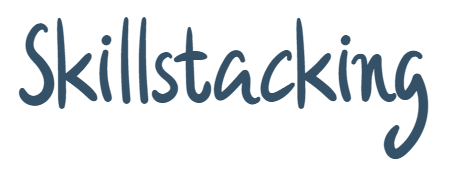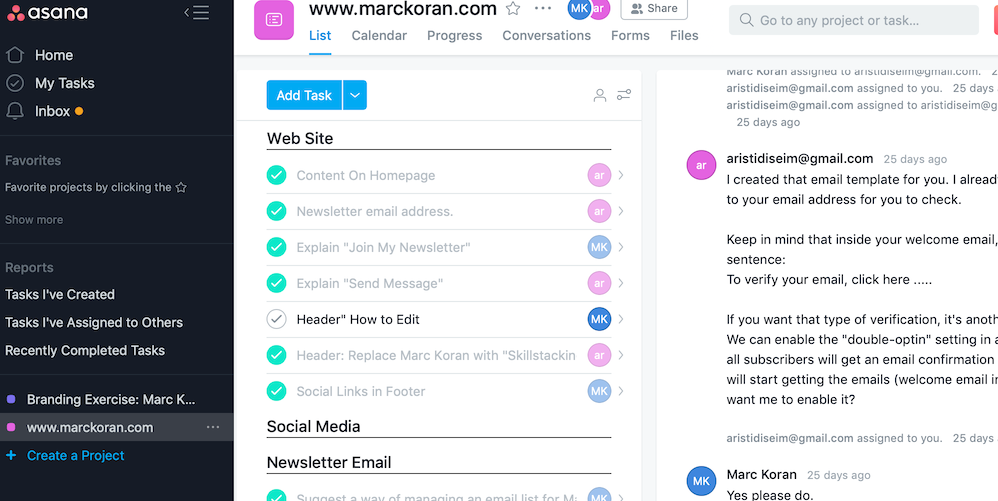I used to carry all tasks in my brain, and the load would stress me out. I would get depressed that I could not get enough things done, feel guilty about procrastination and lose energy trying to remember what I needed to do and when I needed to do them. Many items just slipped my mind entirely, costing me money, time and reputation.
My first attempt to control my task list was in a nice moleskin notebook; I told myself that this time I will be organized! Every day, I would rewrite the list of tasks of the previous day and reorganize and drop items from the list. This was very good for the tasks that were current in my mind but did not leave a lot of room for medium or long-term tasks.
I’ve since switched to a digitized task management system as well as a proper mindset towards tasks. This really turbocharged my mental peace and clarity. I have a couple of rituals that I do every day and some habits that I have undertaken so that I keep the serenity in my mind throughout the day.
Mindset. My attitude towards tasks is:
- A task list is never empty, so why bother stressing that it isn’t?
- Not everything will get done today.
- If 3 things are accomplished today, it was a good day.
- Deciding what not to do every day is very important.
- Leaving slack in the day to get unexpected things done is a priority.
- The ideal task is the one that does not require my attention.
First thing in the morning, when I sit down, I look down at my task list and I pick 3 to 5 things that I commit to doing for that day. I drag those items to the top of the list, and my day is planned. Most importantly, I give myself permission to willingly and knowingly ignore certain tasks. This helps me keep my productivity up, and more importantly my motivation since I have pre-decided what I will and will not do that day.
But what about tasks that come from others, like bosses, family members, and just plain surprises? These either get added to my daily task list or mostly to tomorrow’s task list. Why do something today that can be done tomorrow?
Note for those of us who have a boss. When a boss adds a task to the list, you can always present her with your existing list and ask her which one she wants you to move until tomorrow. If someone else owns your time (task list) then they own the priority as well.
My task list itself is broken into 3 categories:
- Today. Things I want to do today,
- Tomorrow. Things that are coming up this week, and
- This Year. Things that I would like to do in the long run.
What I have found after years of following this process is that things that need to be done in the long run almost invariably never get done. That is okay, however, if it’s not okay, then I look down the Long Term List and pull something up to this week, especially if that will help me or any member my family out, or just be plain fun. After all, we control what we decide to do!
Recurring tasks are also programmed into my system. If I need to do something on a weekly or monthly or quarterly basis, a task will automatically pop-up in my “Tomorrow List”, at least one week before it needs to get done. Ideally, periodic tasks that make it onto the list are extremely well-defined, perhaps even documented. This opens the possibility of outsourcing this task to a virtual assistant or somebody else who may love to do that. The key here would be to make them dummy proof and instructions so clear that anybody can do them.
The ideal task is the one that does not require me! I’ve got quite a few of those and I’m always trying to add more. Automatic bill payments, investments, Digital filing, and even automatic instructions to virtual assistants achieve a wonderful peace of mind. (These tasks require monitoring; stay tuned for a future post on monitoring your life.)
I have experimented with multiple digital tools for keeping task lists.
- Spreadsheets. Basic Start. This is an absolutely wonderful way to start.
- www.asana.com. Great Free Personal Tool. Use this one most extensively. It is just great for online collaboration with my VA’s, integration with emails, and a phone/android app.
- www.jira.com. Overkill. I must say I’m a fan of the software, because of my computer engineering background. I have used it extensively when running scrum teams in software development. It is a lot of overkill for personal task list, but it also has confluence for a wiki-style content management system.
I use Asana to collaborate on projects with other people, Jira for software development and my own task list. There are lots of other tools that are fantastic, however, I won’t be reviewing any of them.
If you plan to “Digitize your Never Ending Task List and Breathe Freely”, work your way up the Skillstacking Ninja Levels below.
Skillstacking Ninja Level 1: Digitize, Categorize, Prioritize
- Get a digital task tracker.
- Write down every task you can think of, no matter how small.
- Assign each task to one of these lists
- Today. Must be done today
- Tomorrow. Must be done this week
- This Year. Must be done some point in the year
- Every day. Decide what you’ll accomplish that day, and ignore the rest
- Whenever a new task shows up, immediately enter into your task list and get it out of your mind.
- Breathe. A task not prioritized for today should not be worried about today. If you got 3-5 things done today, you did well. Pat yourself on the back and be grateful.
Skillstacking Ninja Level 2: Systemize, Automize
-
- Set up automatic recurring tasks top be added to the “Tomorrow” list at least one week ahead of its due date.
- Automate as many tasks as possible so that they do not even show up on your list.
- Breathe: Revel in the knowledge that you will be notified when the time is right and that things are happening for you automatically.
Bonus Skillstacking Ninja Levels (may be future blog posts).
Skillstacking Ninja Level 3: Organize People and Tasks
-
- Teamwork. Assign items to/from other people.
- Projects. Set up multi-task projects with dependencies, critical paths, and team members.
- Breathe: Do not worry when you assign a task to someone, however trust it will get done. (Easier said than done)
Skillstacking Ninja Level 4: Document, Delegate, Monitor
-
- Document lowest value and undesirable tasks.
- Delegate these tasks to team members.
- Monitor the system.
- Breathe: Nirvana. Transcendence. Only do the tasks you want to do.
The last two Levels may sound completely unreasonable and unattainable, and in a sense they are. They key is to reach Level 4 in as many parts of my life as possible. I am continuously trying to get there, and the struggle continues!
I hope this helps! I look forward to your comments.







Great read !!!!
Extremely well
Written !
Didn’t realize the emotions I had toward my todo list were common .
Engineering expertise shines through making this read much more powerful than a self help type blog . Great job !
no time to read other blogs today , I will include the future reads in my ninja 3 strategy
Thanks!
Many people believe look at their todo list with anxiety, and many react by simply ignoring it and then feeling bad about it. I know I used to (and I still do a little bit.) I just keep adding things to the todo list, and I am flirting with the idea of the “not to do list”. Things I consciously list as “I will NOT do them”. That may be my next step 🙂
(If your only technology is your phone, then there are great Apps there that can help you manage your to do list.)